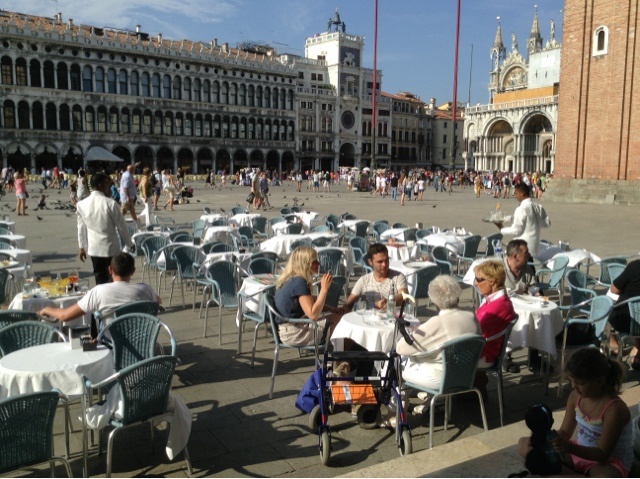Lack of WiFi prevented the following being posted on 30 August 2013:
My great-grandfather's cousin, Henry Thode, who married Richard Wagner's step-daughter, lived for some years in a mansion called Villa Cargnacco at Gardone Riviera. Thode was German, and some time after Italy sided with the Allies in the First World War, the Italian Government suddenly expelled him. He was forced to leave behind his vast library, art collection, and unpublished manuscripts. This loss contributed to his ill health and early death. I came wanting to know what happened to all my relative's property. I also wanted to know exactly when Thode left. Did the Italian Government expel him immediately when Italy entered the war in 1915? Or was he allowed to live freely for a time, despite being an enemy alien? If so, why? And was Gardone Riviera a part of Italy during the war or a part of the Austro-Hungarian Empire?
I didn't learn much. I knew that the mansion was given to this guy called D'Annunzio, an apparent war hero, in 1921. I was told that the Italian Government confiscated all German property in 1918. But my relative may have been expelled as early as 1915 when Italy joined the Allies. It was suggested to me that Hertha Tegner, Thode's second wife, already took some of her husband's lost property, either at the time of their departure or later. But I know she was trying in later years to regain lost property.
We had a tour of the mansion itself, which, apparently, was completely altered by D'Annunzio. I understand only the Globe Room looks as it appeared in Henry Thode's time. Among the books on the shelves, I noticed books by 'R. Wagner', and another by Kraus entitled 'Geschichte der Christlichen Kunst' ('The History of Christian Art'). Unmistakably, much of Henry Thode's vast library still sits on the shelves nearly a century after his expulsion. The guides conceded this. But what of D'Annunzio's art collection? How much of it is actually Henry Thode's? Annoyingly, D'Annunzio gets the credit for everything. OK, he made the grounds look really lovely with their quaint pathways, medieval stone walls, and pretty ponds, not to mention the bizarre placement of the bow of a warship, the Nave Puglia, into the grounds' sloping steppes. But this house and these grounds were not his to change. D'Annunzio appears to have had an interest in art and music, but it was Thode, as an art historian and professor of music, who had probably already acquired much of what D'Annunzio subsequently claimed as his.
I had also wondered what might have become of a piano previously belonging to the German composer, Franz Liszt. (Franz Liszt was Thode's first wife's grandfather.). I was told it is now in the La Scala Opera House in Milan.
It was suggested we email the Archives, which was unavailable for a visit today. We were told they have many documents there, which should provide answers to our questions, such as the exact date of Henry Thode's departure. Also, it seems that Austria-Hungary extended only as far south as Limone, northern Lake Garda. Gardone Riviera was in Italy.
The mansion, altered by D'Annunzio
View of Lake Garda from the mansion
View of Lake Garda from the Church of St Nicholas





















































